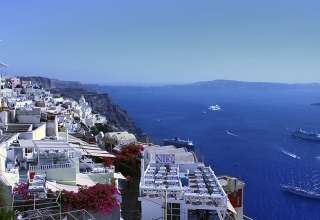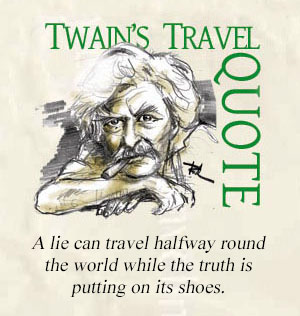Berlin Brandenburg Airport (BER) set to open October 31.
German capital will finally have a large, unified and modern airport.
Germany’s third largest airport, Berlin Brandenburg “Willy Brandt” airport BER, is scheduled to open on 31 October 2020. IATA code for the entire airport location will change to BER with the start of the 2020/2021 winter schedule. Schӧnefeld SXF becomes BER.
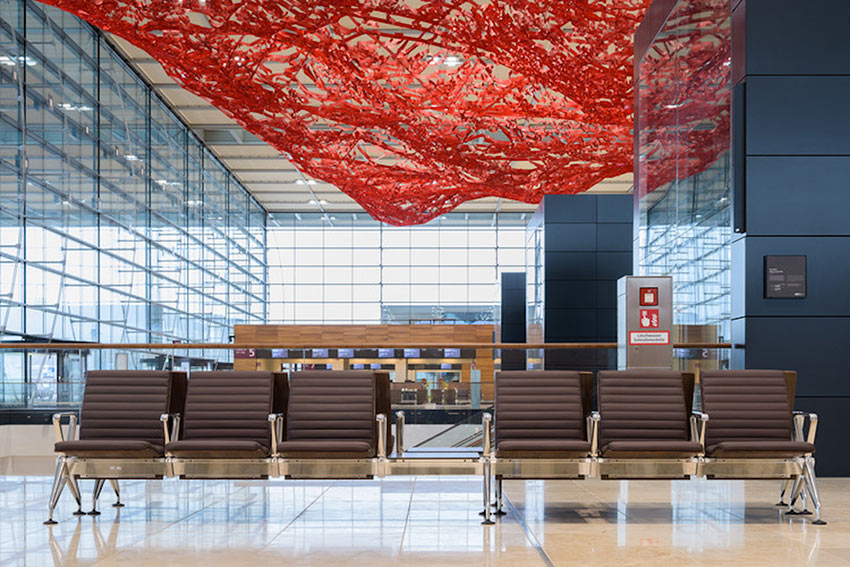
With the opening of the new terminals T1 and T2, the second runway on the southern side of BER will be inaugurated, and the existing airport Schӧnefeld will become Terminal 5, T5, also operated by BER.
With three terminals and two runways on a total area of 3632 acres, the BER has an initial annual capacity of 27 million passengers. The plan is to gradually increase that capacity to an annual 45 million passengers by 2040, creating an estimated 60,000 new jobs by 2035.
With the opening of BER airport, all air traffic in the German capital region will be concentrated in one location. Berlin is a major tourist magnet, political center and trade fair city. The state of Brandenburg has been gaining economic importance, attracting global companies, such as Tesla. The new airport location is an important hub for linking the strong economic and tourism region to more than 150 destinations worldwide. During the ceremonial opening, a Lufthansa and an easyJet plane will be landing simultaneously at the new airport.
Getting there
BER Airport is connected to the rail and road network and can be reached from Berlin’s center in about 30 minutes. After opening, up to 14 trains per hour will be available for passengers. Deutsche Bahn (DB) has integrated the BER airport into its current network and is already offering the first long-distance rail connections.
COVID measures and testing
Passenger safety is of paramount importance at BER airport. As of August 20, 2020, all passengers arriving from high-risk areas have to undergo a free COVID test within 72 hours and isolate in a private environment until the results arrive. At the airport, all passengers are required to adhere to RKI (Robert-Koch-Institute) guidelines and official government recommendations to contain the virus. These can be found in hygiene protocols and include keeping at least 6 ft distance, wearing a mask, and washing / sanitizing their hands regularly. In addition to that, it is recommend that all passengers inform themselves regularly about new measures taken by German officials.
Architecture/Design
Terminal 1, with its long glass facade, forms the center of the airport complex designed by Meinhard von Gerkan, Hubert Nienhoff and Hans Joachim Paap. The guiding principle for the central terminal was the “one roof concept”, with all the key airport functions bundled together. The new passenger terminal consists of a main, two story hall, spanned by a filigree steel-and-glass roof. Facades feature clear geometrical lines, inspired by concepts from Schinkel to Bauhaus, as well as local pine forests. The interior is dominated by warm wood tones and natural stone.
Visual centerpiece of the check-in hall is a large, seemingly floating, red wave made of metal mesh flutters. Designed by Los Angeles-based artist Pae White, the work might be reminiscent of a flying carpet or membrane between the known and the unknown.
Shopping/Hotel
The airport will eventually feature 39 restaurants and 20 service companies, with an almost 100,000 square feet retail plaza set in the heart of the main terminal.
Officially opening on October 31, 2020 (but accepting booking from October 15), the Steigenberger Airport Hotel is located directly at the terminal and within walking from the train station. It features 322 rooms as well as a conference center with meeting space for up to 500 people, fine dining and a spa.
New Booking.com Data Shows How Americans Traveled This Summer
Spoiler: We stayed a lot closer to home
Written by Patrice J. Williams, Booking.com
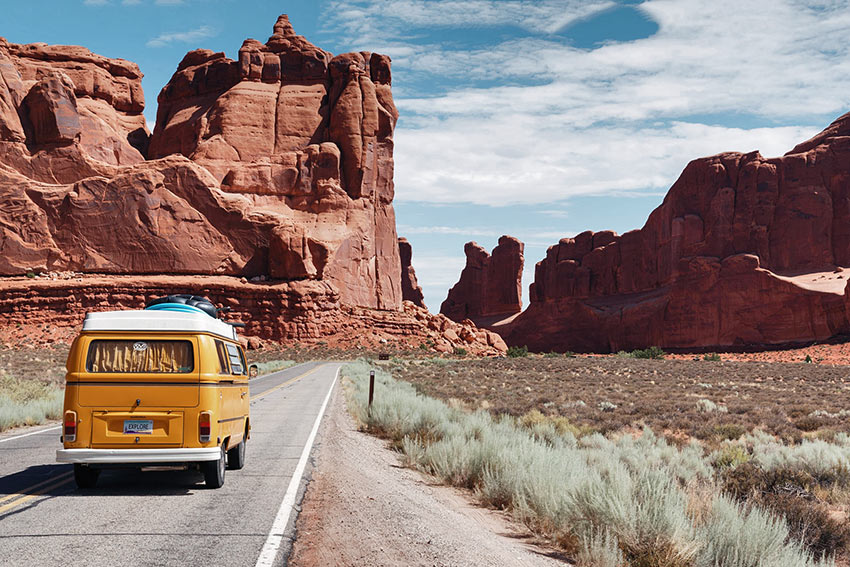
Summer tends to be a heavy travel season for most, but not surprisingly, 2020 was a big exception. New data from Booking.com reveals exactly how the global pandemic affected Americans’ travel plans.
During the summer months, June through August, Booking.com estimates 91 percent of the distance traveled by Americans was within the U.S—that’s more than double the percentage from the same time period last year. Meanwhile, the actual distance that Americans traveled saw an equally steep decline. In the summer of 2019, the average distance traveled was 1,042 miles. This summer? That distance was down by 51 percent, with the average trip covering just 513 miles. That’s the equivalent between New York City and Pittsburgh, Memphis and Chicago, or New Orleans and Dallas.
“During these unprecedented times it’s reassuring to see that while our plans and priorities may have changed, our passion for travel has not,” said Arjan Dijk, the senior vice president and chief marketing officer for the site. “The summer of 2020 proved that the happiness travel can bring is not simply measured in miles and that there are plenty of adventures to be explored and comfort to be found right next door.”
As some international destinations have closed borders or require quarantine periods, these trips that are closer to home are right in line with the travel trends we’ve already seen, including a major increase in road trips.
As far as where Americans traveled this summer, popular spots like Las Vegas and Myrtle Beach remained, well, popular, but there was also extra interest in seaside destinations like Wildwood, New Jersey; Ocean City, Maryland; and Wilmington, North Carolina.
Travel accommodations have seen a slight shift as well. Resorts and motels were the top two and three choices, respectively. Any guesses what took the number one spot? Lodges. Though this type of sleeping arrangement only had 14 percent interest a year ago, this summer it was the top choice for American travelers who may have preferred a more quaint, secluded place to rest their head or maybe their favorite hotel has been one of the many hit with closures.
Now, with experts predicting a possible second wave of the virus this fall and winter1, it remains to be seen how holiday travel plans will change.
During the summer months, June through August, Booking.com estimates 91 percent of the distance traveled by Americans was within the U.S—that’s more than double the percentage from the same time period last year. Meanwhile, the actual distance that Americans traveled saw an equally steep decline. In the summer of 2019, the average distance traveled was 1,042 miles. This summer? That distance was down by 51 percent, with the average trip covering just 513 miles. That’s the equivalent between New York City and Pittsburgh, Memphis and Chicago, or New Orleans and Dallas.
“During these unprecedented times it’s reassuring to see that while our plans and priorities may have changed, our passion for travel has not,” said Arjan Dijk, the senior vice president and chief marketing officer for the site. “The summer of 2020 proved that the happiness travel can bring is not simply measured in miles and that there are plenty of adventures to be explored and comfort to be found right next door.”
As some international destinations have closed borders or require quarantine periods, these trips that are closer to home are right in line with the travel trends we’ve already seen, including a major increase in road trips.
As far as where Americans traveled this summer, popular spots like Las Vegas and Myrtle Beach remained, well, popular, but there was also extra interest in seaside destinations like Wildwood, New Jersey; Ocean City, Maryland; and Wilmington, North Carolina.
Travel accommodations have seen a slight shift as well. Resorts and motels were the top two and three choices, respectively. Any guesses what took the number one spot? Lodges. Though this type of sleeping arrangement only had 14 percent interest a year ago, this summer it was the top choice for American travelers who may have preferred a more quaint, secluded place to rest their head or maybe their favorite hotel has been one of the many hit with closures.
Now, with experts predicting a possible second wave of the virus this fall and winter1, it remains to be seen how holiday travel plans will change.
JetBlue Passengers Will Be Able to Take an At-Home COVID-19 Test
 No nasal swab required
No nasal swab required
Written by Stefanie Waldek, Courtesy of JetBlue
With COVID-19 testing restrictions impeding both domestic and international travel, JetBlue is providing its passengers an option that might help them travel more freely. The airline has announced a partnership with Vault Health to provide its passengers with easy access to an at-home COVID-19 test that could be used to enter specific destinations with coronavirus testing policies in place.
Many places worldwide require travelers to show proof of a negative COVID-19 PCR test taken within a few days of travel. As of right now, it can be a bit tricky to find a testing facility that can turn around results fast enough to fit that particular travel window. But with JetBlue’s new program, passengers can take a COVID-19 test from the comfort of their own home and get results within 72 hours — guaranteed.
The test is a PCR test, but it doesn’t require a nasal swab — it’s collected from your saliva. Travelers who take the at-home test will need to take the test under the supervision of a test administrator via video conference, ensuring that the passenger will adequately collect the sample. The passenger will then overnight the sample to the lab and receive their results within three days. While the test isn’t free, JetBlue passengers will receive a discount.
It should also be noted that some destinations might not permit self-administered tests or saliva tests to fulfill their entry requirements, so you’ll need to do some research in advance of your trip to make sure the program will work for you.
“We continue to hear from health officials that testing is incredibly important in the fight against the coronavirus, and we want to make sure our customers have options for testing, especially prior to travel,” Joanna Geraghty, JetBlue’s president and chief operating officer, said in a statement. “As more and more regions reopen, many are requiring test results to enter. Now with easier testing options, those safety requirements may not be a deterrent for travel, but rather provide greater public health and peace of mind with little inconvenience.”
JetBlue is the second airline to offer take-home tests: United also announced a pilot program that allows passengers to either take a COVID-19 test right at the airport or at home.
Meet the 18-Year-Old Championing Indigenous Rights in Alaska
By Maia Wikler, YES! Magazine
Quannah Chasinghorse is continuing the legacy of Gwich’in women working to protect the Arctic National Wildlife Refuge.
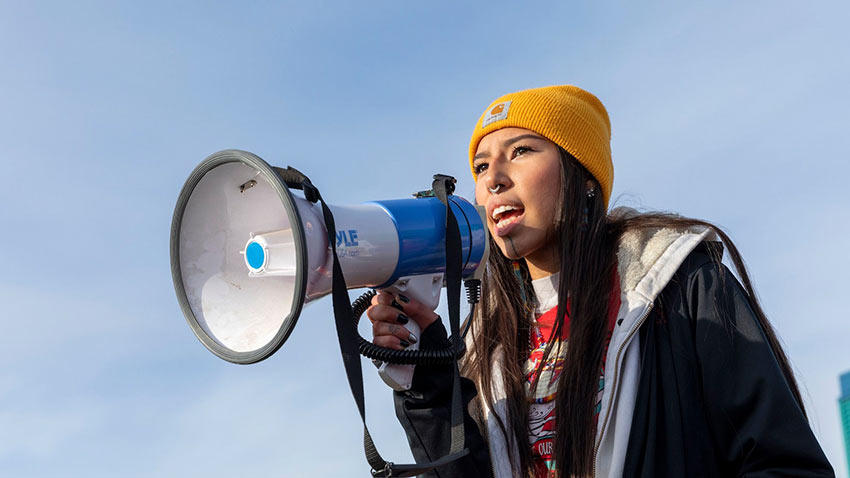
“Did someone lose their dog?” Quannah Chasinghorse jokes, pointing at a large moose in her neighbor’s snow-covered yard. At -40 degrees Fahrenheit, it is a typical winter’s day in Fairbanks, Alaska. Chasinghorse, an 18-year-old Han Gwich’in and Oglala Lakota youth, is curled up on the couch, wearing a shirt emblazoned with the slogan “Protect the Arctic, Defend the Sacred.”
It is a rare moment of rest for Chasinghorse. In the past year, she has traveled coast to coast, advocating to protect her homelands from the desecration of oil drilling, with her mother, Jody Potts, who is Han Gwich’in and a tribal member of the Native Village of Eagle. Her mother also serves as the regional director for Native Movement and is a board member with the Alaska Wilderness League. This mother-daughter duo represents the decadeslong fight to protect their state’s Arctic National Wildlife Refuge.
The refuge is hailed for its immense ecosystem of nearly 20 million protected acres, with sweeping tundra, glacial-fed rivers, and mountain ranges providing a sanctuary for wildlife, especially the 200,000-strong porcupine caribou herd, as of 2018. Before the region was deemed a wilderness refuge by the federal government, in 1960, it was known by the Gwich’in as “Iizhik Gwats’an Gwandaii Goodlit,” meaning “the sacred place where life begins.” This ancestral name refers to the calving grounds for the porcupine caribou on the coastal plain, whose migratory path the once-nomadic Gwich’in followed, and still guides the Gwich’in today. This region has been home to local Indigenous communities for millennia, and their lives, culture, and identities are inextricably tied to the well-being of the land. “What impacts the caribou, impacts the Gwich’in,” says Bernadette Demientieff, who is Gwichyaa Zhee Gwich’in, and the executive director of the Gwich’in Steering Committee.
The Arctic, dubbed ground zero for climate change, is warming at a rate twice as fast as the rest of the world. The region is at even greater risk since the unprecedented decision by the Trump administration and congressional Republicans to open the refuge’s coastal plain to oil and gas development. In August, the Interior Department formally announced its leasing program to open about 1.57 million acres of the refuge to drilling, NPR reported.
But Gwich’in women are leading an intergenerational movement to defend the refuge from oil rigs and wells, all while championing Indigenous rights and justice for missing and murdered Indigenous women. When Demientieff travels to Washington, D.C., to advocate for her people and land, Gwich’in youth join her as part of the official Youth Council. “Each of them are hunters and fishers,” she explains, “and they all know how to survive off the land. They all have something to share.”
Since she was 17, Chasinghorse has joined Demientieff to speak with senators on Capitol Hill as a member of the Youth Council. She credits the teachings of elders and women in her life for her sense of purpose: “My mom has always taught me to remember who you are and where you come from.” As Chasinghorse wrote in a poem that she shares with Teen Vogue: “I’m from the beaded moose hide in modern clothes, from the smell of sage and taste of fry bread. I am from the fireweed trails. From the birch trees I used to climb, whose limbs I remember as though they were my own. I’m from the mushing, hunting, fishing, and berry picking trips, from the family of traditions. I’m from the potlatches and the legends our elders tell.”
“The reason I am the way I am is because my mom, grandma, and aunties have always taught me not to take sh*t from [any]one. To do the best for our people, sticking up for our rights and our lands. I’ve learned a lot from the women in my life,” says Chasinghorse. Her mom explains that Chasinghorse was raised in the movement, where over the years, during sweat ceremonies, she heard her mother and the powerful women in her “auntie squad” talk about activism and the fight for the land.
For four generations, the Gwich’in have fought to honor their ancestral vow to care for the porcupine caribou herd and nurture the land for future generations. “Our ancestors made a promise to protect this land, so we have to keep that promise and our way of life,” says Kaila Druck, a 16-year-old member of the Youth Council. Many youth, like Chasinghorse and Kaila, leave their villages to attend school in Fairbanks, but families continue to return to their fish camps and villages several times a year.
On a blustery March day, I set out with Chasinghorse’s family to their fish camp along the Yukon River. After a treacherous three-hour drive in winter conditions along the Dalton Highway, we reach a juncture where the journey continues on snowmobiles over the frozen river. Locals refer to the highway as “the Haul Road,” Potts explains, because it opened the remote area for workers to haul oil industry materials up to the oil fields in Prudhoe Bay. As we weave across the frozen tundra, we witness a landscape of mesmerizing Arctic colors: the glacial-blue sky, the ground blanketed in bright snow, ashen gray-black swamp spruce and birch trees dusted in white powder. Climate change is rapidly altering this landscape. The locals call the spruce and birch “drunken trees,” because of their twisting, toppling forms caused by melting permafrost. The mountains and sloping hillsides are marked with swaths of tree spires blackened by wildfires that continue to worsen from record-breaking summer heat. As we near the river at nightfall, the Trans-Alaska Pipeline snakes alongside us—a stark reminder of the fossil fuel industry’s threatening presence on the land.
Under an ink-black sky saturated in stars, we unload the snowmobiles and navigate a faint snow trail along the river. “My grandmother picked this piece of land during the land allotments because of the cranberry bushes and the river,” says Potts’ partner, Jamey, as we arrive. “In 2003, the wildfires burned the cabin to the ground, and I’ve been rebuilding the place since.”
Over steaming bowls of moose stew, Potts shares memories of the village: “I would come home from my shift at night and that’s when I would mush. It would be -40, and that’s when it’s the most quiet. It’s too cold even for wind. The kids would be in bed and I would be hooking up the dogs out front, when I would hear the door open and Quannah would come running outside to join me. She was 9. I always had a caribou hide for her. She would bundle up in the sled and we would talk as the dogs wove through trees. I get choked up every time I share that story. I just loved the sound, the crunching of the snow, the dogs breathing. It is so peaceful, mushing out on the land.”
Endless stories are told at fish camp, often about the greed and exploitation of sport hunters who collect moose and caribous’ large antlers only, leaving the carcasses to rot. “It’s our food, which is what hurts us so bad,” Potts explains. These everyday encounters of greed and disrespect are also the stories of climate change—the notion that the natural world is for the taking without responsibility or reciprocity.
On our last day, Chasinghorse and I snowshoe across the river. Crystallized snowflakes shimmer gold in the sunlight, twisting into tendrils that rise with the wind and fall back on the river. Chasinghorse and I watch in awe. She talks about the sense of peace she feels here, knowing her family has lived this way, in love with the land, for generations. “I walk in two completely different worlds,” she says. “When I’m away from the land, I feel like I’m hiding a part of myself; I can’t act too Native. When I’m out here, I’m more connected to myself. I’m strong on these lands.”
Since the outbreak of the coronavirus pandemic, living off the land has become more critical than ever for the Gwich’in. Kaila and Demientieff tell me that the pandemic has caused a shortage of flights that usually import food into remote villages. At the same time, climate change is affecting hunting, fishing, and berry seasons, they say. Circumstances are dire. “I feel like right now we are deprived of our traditions and what we love the most with the pandemic,” Kaila says. “We haven’t been able to hunt this year in Fort Yukon; people were barely able to fish. Some people went out for weeks and returned only with five fish. That’s all we live off of. My whole family depends on living off of food from the land; moose, fish, and berries sustain us all winter. This year we won’t have much.” She continues, “Growing up, I was always told we should not destroy the land. The elders always said we will fully depend on the land one day. Now, with the pandemic, I can see what the elders mean.”
Despite these overwhelming challenges, the Gwich’in continue to protect the Arctic Refuge. Demientieff, of the Gwich’in Steering Committee, has spent the past several years organizing meetings with representatives of major banks to urge them not to finance oil drilling in the Arctic. Chasinghorse joined her for a meeting in New York City, and says she moved financial executives to tears with her story. Their efforts paid off: Deutsche Bank, Goldman Sachs, Wells Fargo, Citi, JPMorgan Chase, and Morgan Stanley—five of the biggest American banks—have committed to no longer backing Arctic drilling projects. Republican lawmakers tried to claim that this decision discriminated against Native Alaskans, and even unsuccessfully asked Trump to make Arctic oil funding a condition of pandemic relief. Still, in June, the Trump administration announced plans to open up 82% of an Alaska nature reserve for oil and gas leasing.
The Gwich’in maintain drilling in the refuge would be akin to cultural genocide as it would devastate the caribou, their primary source of survival. How could the caribou survive seismic blasts, oil rigs, oil spills, loud machinery, and migratory routes severed by haul roads and pipelines? With a rapidly melting permafrost that collapses the ground and drying tundra that spurs wildfires, the Arctic cannot bear the slightest risk of industrial disaster on its already fragile lands. The Arctic is not simply ground zero for climate change because of record-breaking heat, accelerated permafrost, and glacier melt, it’s also a landscape that represents the larger story of climate change. This is a land fraught with a history of Indigenous displacement and dispossession, and ongoing colonial violence driven by insatiable corporate greed. These are the systemic forces driving the climate crisis.
And yet a deep, ancestral love spanning thousands of years fuels the Gwich’in in their intergenerational fight to protect the refuge. “We need more Indigenous youth to believe in themselves and have people believe in them,” says Chasinghorse. “The more I fought, the more I healed. Know you have power. It is connected to the land and ancestors. We’re all fighting the same fight.”
The cataclysmic shifts caused by the climate crisis and pandemic can create opportunity for change that is parallel in magnitude. To paraphrase writer Terry Tempest Williams’s book on erosion, our undoing may be our becoming. The power of the youth vote is reason to hope. In the upcoming election, 1 in 10 voters will be Gen Z. The Brookings Institution reported that Gen Z and millennials “now comprise a greater share of the eligible voting population than has ever been the case. It’s about the same share of eligible voters as baby boomers and their elders—generations that voted for Trump in 2016 and for Republican candidates against President Obama.” It has been reported that by 2030 “millennials and their juniors will make up more than half [of] not just the population, but of all eligible voters.”
At the young age of 18, Chasinghorse, like many other youth in her community, has already dedicated her life to honoring her ancestors and fighting for future generations. As we pack up to leave fish camp, she shares what this fight means to her, while Potts braids her hair. “I’m not an environmentalist; I’m an Indigenous youth trying to stick up for our ways of life,” Chasinghorse says. “They’re just tearing up more land, destroying more water, and in the end, when all of the oil is extracted out of Alaska, what are they going to do? We need to reconnect and rebuild our relationship to the land. If all of this were to be destroyed from drilling and oil spills, I don’t know how I would feel connected anymore. I don’t want that taken from us.”
Potts looks at her daughter and says, “And that’s why we’ll fight, right? We are continuing on.”
10 Domestic Tours for 2021!
Courtesy Austin Adventures
Here is a countdown of our top 10 domestic tours for 2021!
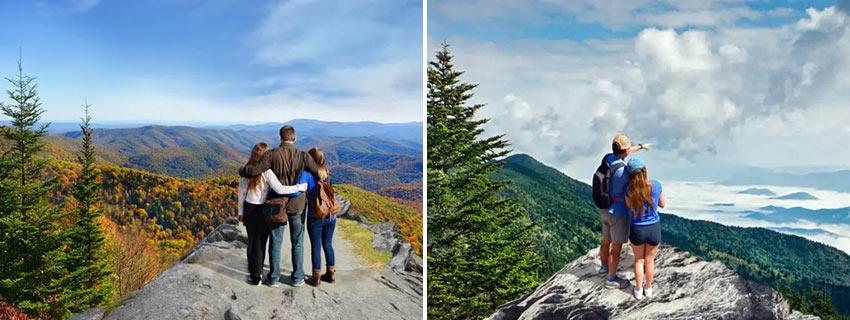
10. North Carolina – The High Country
No need to fly to Europe to experience European history and culture. North Carolina is abundant in early American history interwoven with French, British, and Spanish notes. While you may feel the remnants of the past in its beauty, you’re sure to be reminded of its American present as you watch a bald eagle soar above the Catawba River winding through the Blue Ridge Mountains. Adventure travel through the landscape on foot, kayak, or zipline and then refuel yourself with the American tradition of Carolina BBQ!
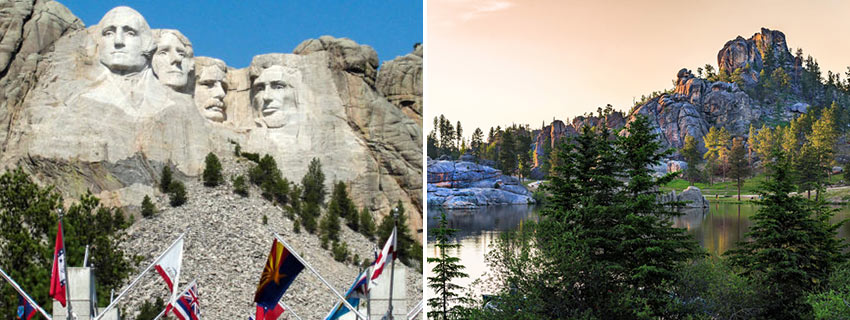
9. South Dakota – Black Hills & Mount Rushmore
If stories of American cowboys and outlaws pique your interest, then perhaps the majestic Black Hills of South Dakota is the adventure travel choice for you! Seeing the country from the top of Bear Butte will leave no doubts as to why Native Americans revere it as sacred. From train to bicycles, you’ll traverse the land above while on foot you’ll explore the caves below. And of course one of the man-made marvels of the world, Mount Rushmore, is sure to leave you in awe of the natural canvases and man’s design capabilities.

8. California – Wine Country
If you’ve been itching for the views of Southern France or the peaceful rolling hills of Tuscany, you may want to add this domestic trip sure to suit your French fancies to your list as well. The wine country of California is an almost impossible mixture of forests, valleys, beaches, and mountains that is home to some of the most decorated and diverse wineries in the world. Luscious west coast grapes boasting redwood nutrients nurtured with sea breeze moisture are used to concoct wines to match anyone’s pallet. Sommeliers flock to this countryside to visit these gorgeous and historic vineyards. By bike or by hike, there is no wrong way to see the beauty of this magical place.

7. Arizona – Grand Canyon National Park
If one of the seven natural wonders of the world were in your backyard, would you be any less impressed by it? Of course not! Then there is no wonder as to why Grand Canyon National Park is consistently one of our top trips. A picture will never be able to capture the true depths of the Grand Canyon nor the striking colors of the rocks. The position of the sun highlights different faces of the canyon’s features around you as the days goes on and there is no shortage of magical encounters with nature and wildlife.
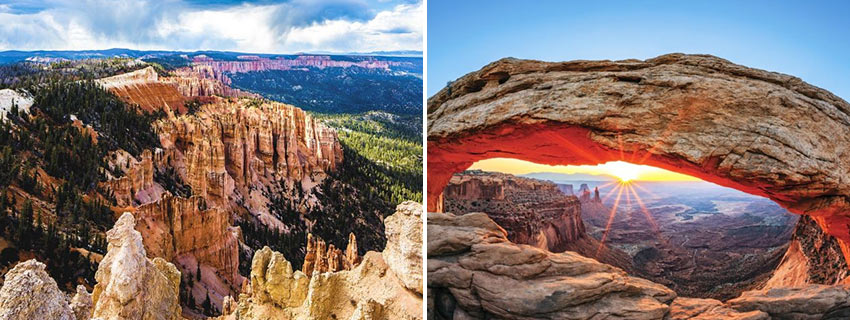
6. Utah – Mighty Five National Parks
On this trip, you’ll most definitely question whether you are still in the United States. As a matter of fact, you might even wonder if you are still on Earth and have found yourself traversing Mars. Utah boasts five stunning national parks, each holding wonders that deserve to be marveled at for generations to come. From looking down into stunningly red and orange canyons to peering up at the artistic Fisher Towers, no matter where your gaze falls, you’ll find beauty. Around each corner are hidden waterfalls and geological masterpieces. Why would we only take you to one National Park when you can experience all five?

5. Alaska – Kenai Fjords & Peninsula
America’s last frontier anticipates your visit, a trip sure to hold adventure and wonderment. The terrain transitions from glaciers and dark blue oceans to snow-covered mountains surrounded by dense, green forests. Each scene has one thing in common: they are each breathtaking. Very few places can make you feel truly one with nature and Alaska is more nature than human habitat. The orcas and sea otters are sure to remind you of that. The call of the wild is strong here; will you answer?
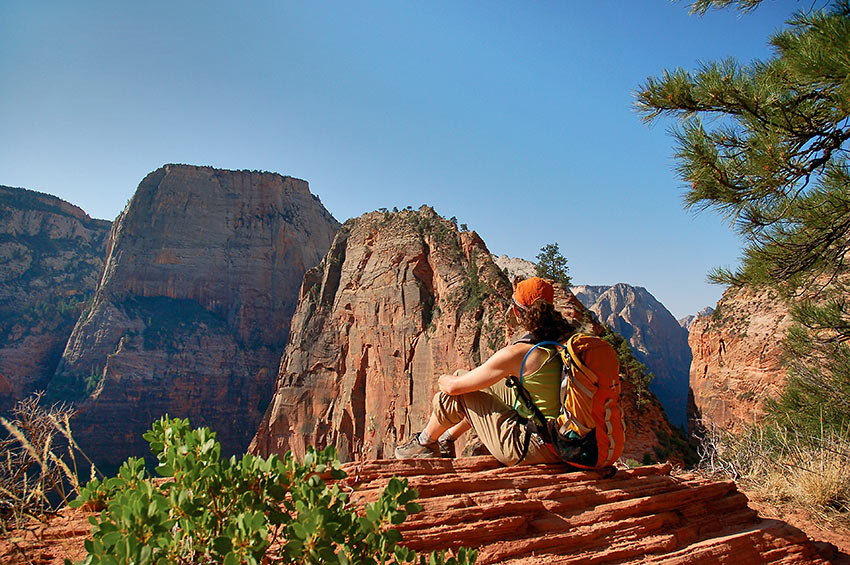
4. Utah – Bryce Canyon and Zion National Park
Bryce Canyon and Zion National Park are must-see places to visit in Utah. In fact, these national parks are truly two of the most beautiful places on earth. That’s why we include these amazing destinations. Enjoy hiking, biking, picnics, and more as you explore canyons, waterfalls, natural springs, and stunning landscapes. This is a great summer vacation idea and terrific way to make memories!
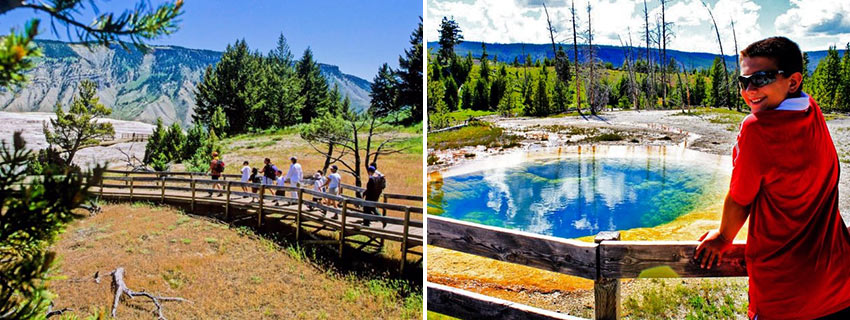
3. Wyoming – Yellowstone National Park
The lands here are so strikingly beautiful and unique that these acres became America’s first protected lands as a National Park. Yellowstone National Park is certainly on the top of the list as a tourist destination, but no tour bus can show you the park like we can. Off the beaten trail, you’ll watch the Yellowstone River’s Upper Falls rush over rugged, majestic cliffs and follow the water through the picturesque Artist Point aptly named for the array of colors painted on the mountainside. Take a horse ride through the Absaroka Mountains and finish off your trip with a mineral soak in the famous Chico Hot Springs. Yellowstone is a top destination for most, but for us, it’s not just a destination; it’s an adventure.
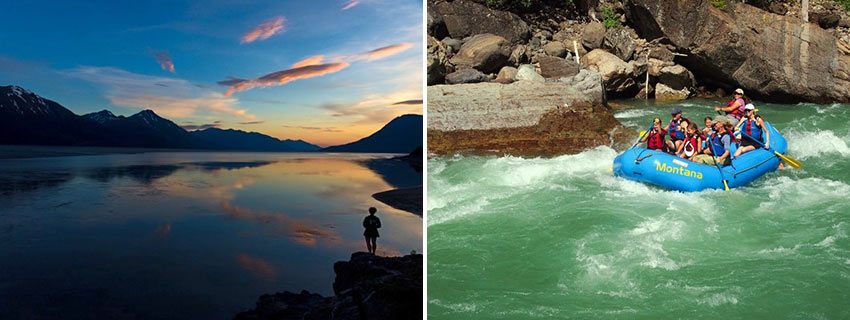
2. Montana – Glacier National Park
Adventurers assemble! This adventure travel vacation is unlike any other which is why it makes the list. Hiking, biking, and river rafting will be just tidbits of your time in the park known as the “Crown of the Continent”. If that doesn’t put into perspective how awe-striking the park is, perhaps the description dubbed by the Native Americans, “Backbone of the World” will do a better job. While you’re in this nexus of world beauty, you’ll also be going to the sun. “Going-to-the-Sun Road” will at least make you feel that way as you overlook the mountain valley and the glaciers floating in the lakes below. For the Austin Adventures home team, this truly is our backyard. But here, you’ll feel like you’re closer to heaven.
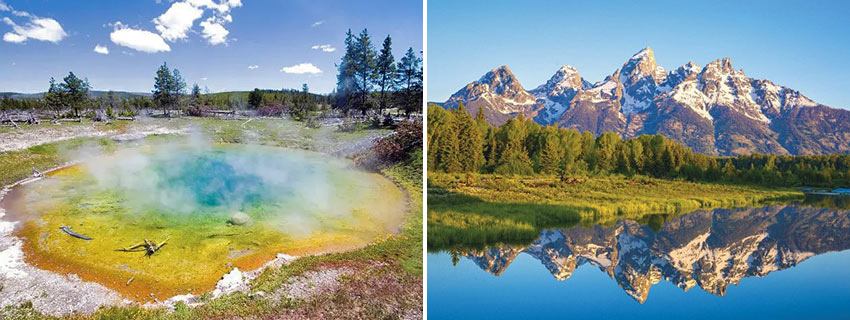
10. Wyoming – Yellowstone & Grand Teton
The west may have been won in America, but one part of the west has largely remained untouched: Yellowstone & Grand Teton National Parks. It’s hard to believe that you can see such diverse terrains nestled so close together, from rivers in deep valleys and wildflower pastures to towering mountains and the colorful geothermic wonders found below the ground you walk on.
Postal Service Workforce, Flattened by the Pandemic, Quietly Resists DeJoy’s Changes
By Antonia Noori Farzan, Jennifer Hassan, Brittany Shammas, Miriam Berger, Lateshia Beachum and Kim Bellware, The Washington Post
This autumn, as controversial new procedures at the U.S. Postal Service snarled the nation’s mail delivery and stirred fears of how the agency would handle the election, rank-and-file workers quietly began to resist.
Mechanics in New York drew out the dismantling and removal of mail-sorting machines until their supervisor gave up on the order. In Michigan, a group of letter carriers did an end run around a supervisor’s directive to leave election mail behind, starting their routes late to sift through it. In Ohio, postal clerks culled prescriptions and benefit checks from bins of stalled mail to make sure they were delivered, while some carriers ran late items out on their own time. In Pennsylvania, some postal workers looked for any excuse — a missed turn, heavy traffic, a rowdy dog — to buy enough time to finish their daily rounds.
“I can’t see any postal worker not bending those rules,” one Philadelphia staffer said in an interview.
With the Postal Service expected to play a historic role in this year’s election, some of the agency’s 630,000 workers say they feel a responsibility to counteract cost-cutting changes from their new boss, Postmaster General Louis DeJoy, that they blame for the mail slowdowns. They question whether DeJoy — a top Republican fundraiser and booster of President Trump — is politicizing the institution in service to a president who has actively tried to sow distrust of mail-in voting, insisting without evidence that it will lead to massive fraud.
DeJoy insists the operational shifts were not politically motivated, emphasizing that he inherited an agency on the verge of financial collapse. At the time of his arrival in June, the Postal Service also was trying to fend off a takeover by Trump’s Treasury Department, according to internal Postal Service documents. Its workforce was getting flattened by the pandemic as a result of surging absences and package volumes, and its biggest customer, Amazon, was threatening to pull its multibillion-dollar business.
With a mandate to stabilize the Postal Service’s balance sheet, especially its $160.9 billion deficit, DeJoy imposed stricter dispatch schedules on transport trucks that prohibited late and extra trips, forcing workers to leave mail behind. Managers cracked down on overtime, though DeJoy contends they did so of their own accord. He also declined to reinstall hundreds of mail-sorting machines and blue collection boxes removed under his watch. Though he put some of these efforts on hold after public backlash, and four federal judges have since issued temporary injunctions on all operational changes, DeJoy has deeper cuts in store. He told lawmakers last month to expect “dramatic” changes after the November election, including reductions in service and price increases for Americans in rural areas.
DeJoy’s approach marks a fundamental shift, experts say, modeling the agency as more business enterprise than government service. But it also has profound implications for employees in the form of heavier workloads and lost overtime.
In interviews, 15 Postal Service workers and local union leaders in eight states described a deep decline in morale since DeJoy made clear his intent to retool the Postal Service — with little input from the heavily unionized workforce — that have fixed intense public and congressional scrutiny on the agency. They also say they are prepared to defy directives that would limit how they do their jobs.
Most of the workers interviewed for this report spoke on the condition of anonymity because they were acting against agency guidance. Last month, an internal Postal Service memo warned employees not to speak to journalists and to be wary of customers who ask “a series of questions.”
The Postal Service’s dire financial situation, coupled with mounting political pressure, and worries about an election in which nearly 180 million Americans are eligible to vote by mail, has begun to overwhelm its workforce.
“People are burned out,” one New Jersey letter carrier said. “I haven’t been this burned out in a long time, and I’ve been doing this a long time. We’ve never had a summer like this. I tell my customers, ‘Call your congressman, because I’m being told not to deliver your mail.’ ”
‘Every piece, every day’
New postal workers are introduced to the agency’s unofficial motto within their first days on the job: “Every piece, every day.” It’s referenced so frequently that “EPED” is shorthand to work faster, or longer, when mail piles up. Any conscious effort to delay mail is, under federal law, punishable by fine and as much as five years of imprisonment.
Many postal workers see the changes that have slowed mail as violating the spirit, if not the letter, of that law.
They view themselves as couriers of prescription medications, paychecks, bills and more, and also as neighbors to the people on their routes, checking in on elderly residents and delivering life’s necessities. The coronavirus pandemic has only magnified that sense of responsibility, they say.
“You look at the news and you get worried,” said one Philadelphia postal worker. “Are we going to be the end-all, be-all of election integrity and covid response for this country? Having your own personal problems, too, it all adds up. I think it’s really starting to get to people, both newer and seasoned veterans of the job.”
Since his June 15 start, DeJoy has focused on shoring up the Postal Service’s finances. Despite surging package volumes during the pandemic, the agency has been losing ground on first-class and marketing mail — its most profitable products — for years.
“The thing is, right now the size of their hole is so big and continuing to grow, there is no one silver bullet to fix this,” said Kenneth John, president of the Postal Policy Associates consultancy and a former senior analyst at the Government Accountability Office. “They’ve done a lot of the low-hanging fruit already, so you’re left with a set of really difficult choices. You’re left with really big changes.”
What’s more, he added, DeJoy’s efforts can close only a relatively small portion of the agency’s deficit. “You’re either left with these difficult choices and big changes, or ultimately, Congress is going to need to pay for it.”
Much of the Postal Service’s financial difficulty is structural: Congress reorganized the agency in 1970 and essentially ordered it to operate as both a public service and business. As such, it is supposed to be self-sustaining without benefit of taxpayer funding. But the passage of the 2006 Postal Accountability and Enhancement Act mandated that it prepay employees’ retirement and health-care benefits, an obligation held by few other government agencies, let alone private companies. Today, retiree costs account for nearly three-fourths, or $119.3 billion, of its deficit.
Because the Postal Service lacks revenue streams divorced from mail volumes, nearly any cost-cutting maneuver would almost certainly hurt service, an issue that draws heaps of congressional attention even as lawmakers have put off substantial postal reform. But some of DeJoy’s changes go right to the heart of the agency’s operations. Some flexibility in delivery schedules, such as allowing late or extra delivery trips, ensures that mail arrives on time, experts say, and prevents backlogs.
Postal leaders have long relied on overtime to keep the mail moving, as it is more cost efficient than expanding payroll. That supplemental income is a boon for many workers — comprising nearly 10 percent of all work hours within any given pay period — but an albatross for agency finances. Yet government watchdog groups, including the Postal Service’s Office of Inspector General, have identified overtime as a potential source of cost savings.
“If it means you’re going to hire more workers, there are going to be more families that have a family-sustaining union job, that’s fine with us,” said Mark Dimondstein, president of the American Postal Workers Union (APWU), which represents more than 200,000 current and retired postal employees. “If it means you’re going to cut out overtime and, therefore, the people are not going to get the service that they need and deserve, then it’s horrible.”
The cost-cutting efforts have led to multiday delays in communities all over the country. As of the final week of August — five weeks after DeJoy’s changes took effect — on-time delivery rates for first-class mail had declined from more than 90 percent to roughly 85 percent, according to Postal Service data provided to Congress. For periodicals, they went from 80 percent to 75 percent.
John Barger, a Republican member of the Postal Service’s governing board, told the Senate Homeland Security and Governmental Affairs Committee this month that DeJoy’s changes were starting to “bear fruit” and that the board was pleased with his performance. “The board is tickled pink,” he said.
“Thanks to the great work and dedication of our employees, our service performance continues to improve,” a Postal Service spokesman said in an emailed statement to The Post.
But some workers vividly recalled scenes of mail and packages piling up, days at a time, this summer during the worst stretches of the transition. Postal workers in Michigan and Iowa described seeing entire pallets of boxes go unsorted and sit outdoors in the rain or summer heat. Sometimes the smell of rotting food attracted swarms of flies, they said.
At the Royal Palm Processing and Distribution Center in Opa-locka, Fla., massive stacks of marketing mail sat untouched for 43 days, according to local union officials.
“You know, it’s just disheartening,” said Dana Coletti, president of the American Postal Workers Union Local 230 in Manchester, N.H.
Four federal courts have also found DeJoy’s changes to be unlawful. Judges in Washington state, New York, Pennsylvania and the District of Columbia all held that the Postal Service should have sought an advisory opinion from the Postal Regulatory Commission — a process that would have allowed for public comment — before instituting the new policies. The judges blocked the Postal Service from pursuing DeJoy’s plans, and lawyers representing 19 states and a group of voters who brought the suit are in negotiations with the Postal Service over a potential settlement.
‘The stakes definitely feel higher’
The long mail delays made some postal workers think more about the role they’d be playing come election season.
The Pennsylvania primary in early June provided a taste of what was to come, said the Philadelphia worker. Though the pandemic was the biggest worry at the time, “we had a lot of issues. There were people at the plant that weren’t coming in or were sick. We were seeing delays with that. So now we’re looking at this [general election] and going, ‘Oh, jeez, this is not going to be good.’ The stakes definitely feel higher, especially given what this election really means.”
In Michigan, one postal worker considered the removal of public mailboxes, which are subject to periodic checks to ensure they are being used, as disproportionately affecting people of color. When a collection box is removed in a wealthy suburb, residents have the time and resources to push back, said the carrier, who is Black. But when it’s removed in a racially diverse working-class neighborhood, it’s just another government service that’s been clawed back.
“It’s kind of like everything else. It wasn’t built for us,” the worker said of the Postal Service and its relationship with Black people.
DeJoy’s background — he’s donated more than $2 million to the Trump campaign and GOP causes since 2016 — doesn’t help matters, the postal worker said, and makes him feel as though the Republican Party has co-opted the Postal Service.
Taken together, Trump’s repeated attacks on mail-in voting, his connection with DeJoy, and DeJoy’s operational changes look too conspicuous to be coincidental, the carrier said, even if DeJoy has stated publicly that he’d stand up to the president when necessary. Some postal workers say the pushback has to start with them to show that DeJoy’s instructions go against the mail service’s operational and ethical mandates. Plus, they say, they are legally bound to ensure the timely delivery of mail.
In New York, one mechanic expressed dismay that he is surrounded by a “bunch of yes men” who are simply going to follow orders.
“It’s disheartening to hear from my boss that he wants me to do something that could very potentially cripple the system. It’s disheartening to hear that people think we’re going to fail. We handle this kind of volume all the time,” he said of the election. “But if they do these things with delivery times and we get high volume around holiday season and the election, it will fail. No question. It will fail. We should get the ballots out. We really should, but all it would take is one person in a nice shiny suit to say, ‘Leave those ballots, take the other mail.’ And everyone would say, ‘Yes sir.’
“There’s a point where I got angry. I’m not happy at all that I’m being politicized. I’m literally trying to do my job, and they’re telling me that I can’t.”
‘Don’t do anything illegal, unsafe, immoral’
DeJoy on Aug. 18 suspended parts of his cost-cutting program after congressional and public blowback — much of it on social media, where images of mailbox removals were met with suspicion and outrage. But it was too late for most of the 671 mail-sorting machines that had been tapped for dismantling and removal across 49 states, D.C. and Puerto Rico.
The agency said that the massive machines, representing close to 10 percent of its inventory and capable of sorting 21.4 million pieces of paper mail per hour, had been earmarked long before DeJoy and that their decommissioning was simply a reflection of Americans’ diminishing use for letters and growing reliance on package delivery. But many workers saw it as further erosion of a finely calibrated infrastructure, one with real ramifications for customers who rely on the agency for their prescription medications and other crucial deliveries.
“It bothers me, because I like to do my job. Some of us do this for 20 years,” said the New Jersey letter carrier. “You see kids grow up from babies and watch them get married. They see you in Wawa, and they buy you a coffee. They say, ‘This is my mailman, he’s a great guy.’ Now they say, ‘Where’s my mail?’ ”
Postal workers’ responses varied from insubordination to small acts of neighborly heroism. In Florida, one manager told of instructing employees to meticulously document their hours and what happens to mail to uphold accountability standards. There are forms for reporting late or undeliverable mail and to record overtime, though several postal workers say supervisors have downplayed the need to complete them in recent weeks.
“What I try to tell people is this: Yes, if you get an instruction, you should follow the instructions of your supervisor,” the manager said. “But every manual says the same thing: Don’t do anything illegal, unsafe, immoral. Well, my manager knows that if he doesn’t want mail to be reported late, to keep the mail out of my building.”
Last month in New York, machinists were ordered to remove sorting machines and use spare parts to augment another, one of the workers said. The person told supervisors that such a move wouldn’t help; the enlarged sorter would be able to collate mail into more carriers’ routes, but it also would process letters more slowly than two machines doing the job simultaneously. When his supervisor told him to repeat the process for another set of machines, the machinist and colleagues balked and drew out the steps required to implement the change. Eventually, superiors gave up on the order.
By then, House and Senate committees had called emergency hearings to cross-examine DeJoy over his relationship with Trump and his operational changes. “I am not engaged in sabotaging the election,” DeJoy testified before the House Oversight Committee on Aug. 24. Days earlier, he told a Senate panel he planned to vote by mail.
In Toledo, mail is shipped to the Michigan Metroplex outside Detroit for processing. When items arrive too late for the trucks headed to Michigan, a manager not eligible for overtime will hop into a Postal Service van and transport that mail separately, said Martin Ramirez, president of the APWU Local 170. That way, the Toledo offices won’t log overtime hours, even though that worker still puts in extra time.
“This is the dancing between the raindrops,” Ramirez said.
As Toledo’s trucks arrive at distribution centers, clerks scan the wire racks carrying the mail to try to spot medications, checks and bills, said Jennifer Lemke, the clerk craft director at Local 170. Even if the day’s mail gets delayed, Lemke and other clerks will retrieve essential items and send them off with carriers.
When angry customers call the post office or come to the retail window, Lemke said, she apologizes for mail delays, then sends for the local postmaster.
“I will put it off on the people that are causing the damage,” she said.
“My message to [local union members] is: You do what you can to satisfy the customer,” Ramirez said. “Look, we’re going to fight from national on down. I don’t need you losing your job.”
National Anthems With Surprising Origins
More than any other song, a national anthem needs to hit all the right notes. While the melodies may range from triumphant marches to traditional hymns, the lyrics should be uplifting, with words that convey patriotism and pride. Most citizens can sing along to their country’s national anthem at parades and sporting events, but the story behind each song is often lesser-known. From nationwide contests to government petitions, the origins of these five national anthems probably aren’t what you’d expect.
“Negaraku” (Malaysia)
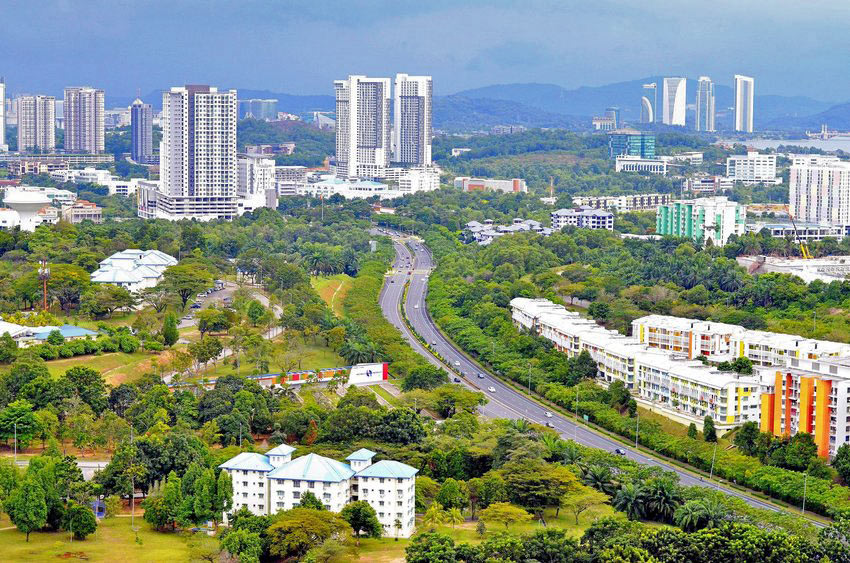
Malaysia’s national anthem is technically the state anthem of Perak, which was a separate sultanate until it joined the Federation of Malaysia in the 1950s. When the Sultan of Perak visited Queen Victoria in 1888, the palace asked to play Perak’s national anthem during his entrance. One problem: At the time, Perak had no national anthem. To avoid embarrassment, an aide to the sultan chose one on the spot, humming a popular tune from the Seychelles by French poet Pierre Jean Béranger. Years later, as Malaysia prepared for independence, officials struggled to find an appropriate song that unified the country. Eventually, they selected the Perak state anthem, largely because the tune was considered traditional. The original song was entitled “Moonlight,” but the lyrics were changed to a more appropriate patriotic anthem, and the song was renamed “Negaraku,” meaning “My Country.”
“Himno Nacional Mexicano” (Mexico)
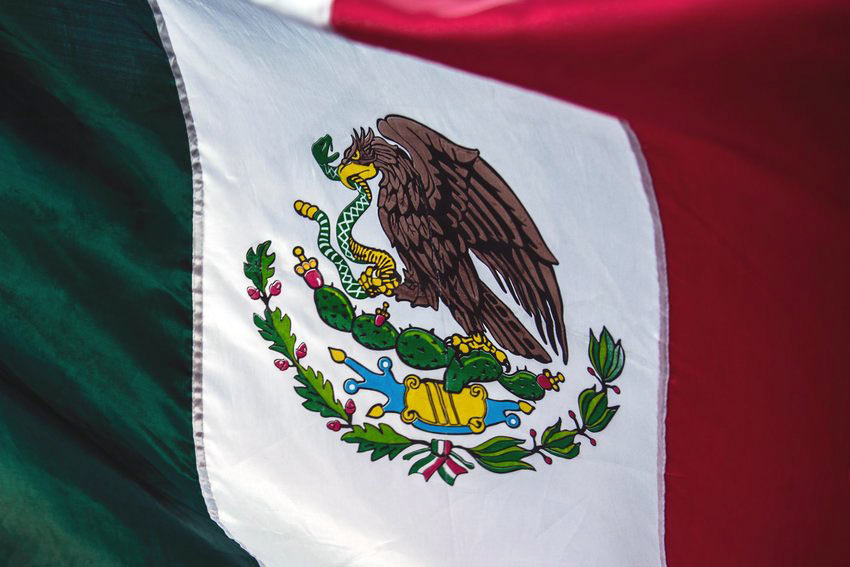
Fifty years after Mexico gained independence from Spain, the country still lacked a national anthem, a fact that prompted the president to hold a nationwide contest. At the time, Francisco González Bocanegra, a Mexican poet, wanted no part of the competition — but his fiancée had other ideas in mind. She locked González in a room and refused to let him out until he slipped a 10-verse poem under the door. In the end, her stunt paid off: The poem was chosen for the lyrics of the national anthem, accompanied by a melody written by Jaime Nunó Roca. The new anthem was presented to the nation on September 16, 1854, but it wasn’t officially adopted as the national anthem until 1943.
“God Save the Queen” (Great Britain)
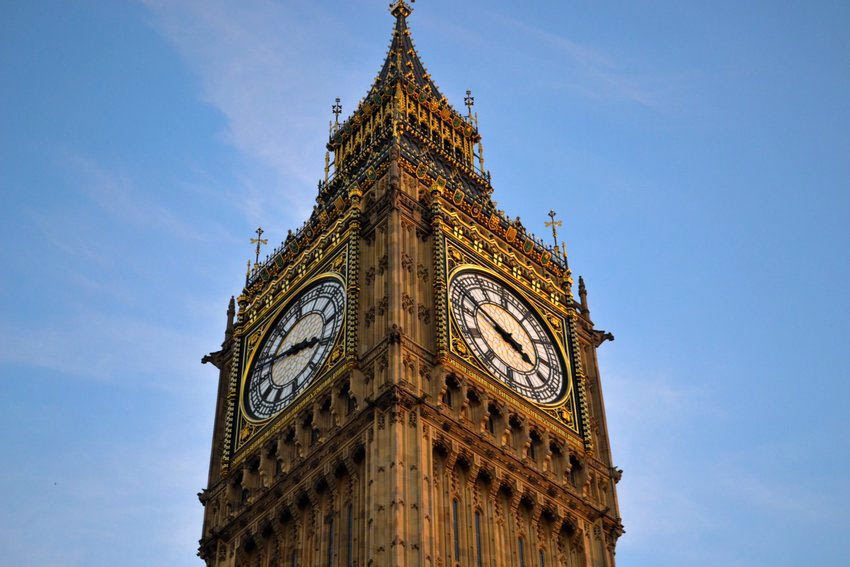
“God Save the Queen” is perhaps one of the best-known national anthems. But its origins? Surprisingly less so. The anthem was first performed for King George II in 1745 (with “queen” swapped for “king”) as an attempt to boost his morale after losing a battle in the Jacobite uprising. It seems the song did the trick, as the king went on to squash the rebellion forces within a year. Some 20 years later, citizens started referring to “God Save the Queen” (or King, depending on the current ruling monarch) as the national anthem. To this day, there is no authorized version of the anthem, as the words are so ingrained into national tradition that it never needed to be sanctioned. Despite its fame, the authors of the melody and lyrics are unknown to this day. Some believe the lyrics are derived from the 16th century, when “God Save the King” was a code between watchmen, while various composers, including Joseph Haydn and Henry Purcell, claimed to have written the music.
“La Bayamesa” (Cuba)

“La Bayamesa,” the official anthem of Cuba, was written and composed by Pedro “Perucho” Figueredo during the Ten Years’ War, one of the nation’s attempts to gain independence from Spain. Figueredo wrote the melody in 1867 but wasn’t inspired to write the lyrics until a year later, when Cuban rebel forces seized the city of Bayamo. “La Bayamesa,” which translates to “The Bayamo Song,” celebrates the spirit of Cuba’s rebellion against Spain, which caused it to become popular with the revolutionary efforts. Two years after writing the lyrics to “La Bayamesa,” Perucho was captured and executed by a firing squad. Before he was shot, he shouted a popular line from the anthem: “Morir por la Patria es vivir,” which translates to “To die for one’s country is to live.” The song became the official national anthem in 1940.
“God Defend New Zealand” (New Zealand)
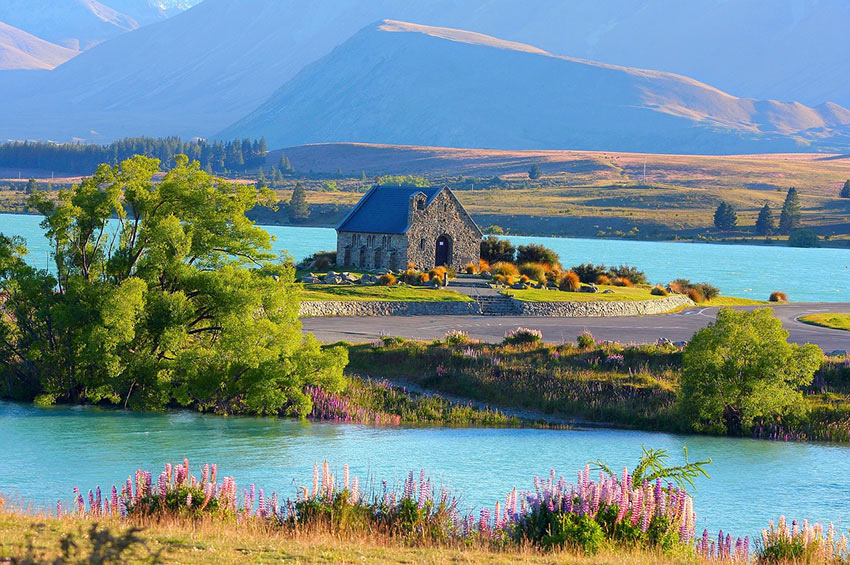
As part of the British Commonwealth, New Zealand actually has two anthems that are nationally recognized — “God Save the Queen” and “God Defend New Zealand.” Thomas Bracken, an Irish poet who had immigrated to New Zealand, wrote the lyrics for the latter in 1870, set to music by John Joseph Woods. Woods submitted the melody — which he composed in a single attempt — as part of a newspaper contest in 1876. As “God Defend New Zealand” increased in popularity over the years, New Zealanders realized it needed to be recognized nationally and successfully petitioned the government in 1977 to adopt it as a second national anthem. “God Defend New Zealand” has another version entitled “Aotearoa” — the anthem was translated into the Māori language as a way to recognize the Indigenous people of New Zealand.







